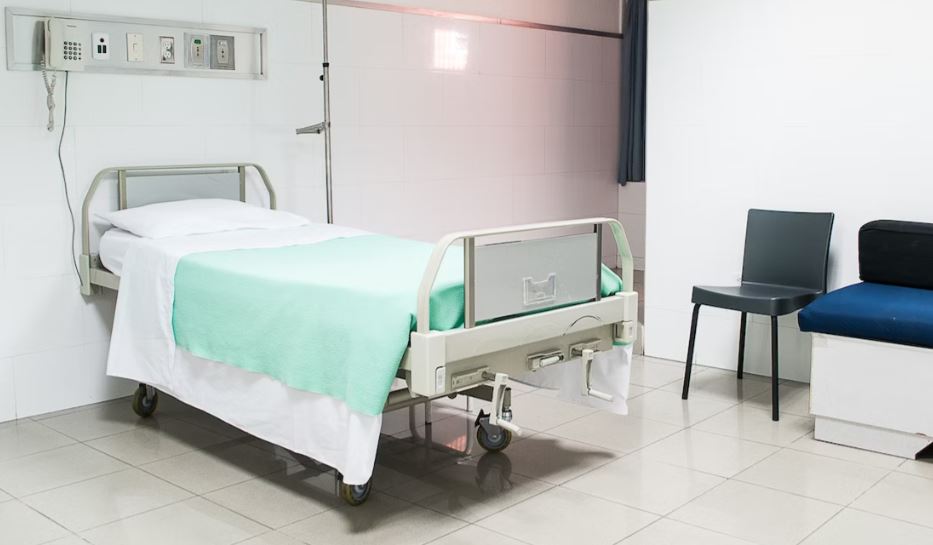Patients may have difficult periods during their stays in the hospital; therefore, the importance of textiles such as gowns, sheets, blankets, and shower curtains cannot be overstated. The provision of comfort, the upkeep of cleanliness, and the promotion of a sense of general well-being are all significantly aided by these seemingly insignificant objects. In the next article, we will discuss the relevance of hospital textiles, focusing on how important it is to highlight their value in establishing a suitable environment for both patients and healthcare staff.
The Struggle to Strike a Balance Between Discretion and Accessibility in Hospital Gowns
The patient gowns that are used in hospitals are a common sight in any medical facility, and they serve an important function. These gowns strike a careful balance between modesty and accessibility, as they were designed with the patient’s convenience and the requirements of medical practice in mind. They make it possible for medical professionals to perform tests and operations while simultaneously ensuring the patient’s comfort and facilitating their freedom of movement. Patients can expect to have a more pleasant experience overall during their time spent in the hospital because modern hospital gowns are frequently crafted from materials that are both lightweight and breathable, such as cotton or polyester blends.
Sheets and blankets: the key to comfortable and hygienic sleep
Not only do sheets and blankets in hospitals serve to provide warmth and comfort, but they also serve a hygienic purpose by preventing the spread of germs. In order to maintain the greatest possible levels of cleanliness, hospitals place a premium on the utilization of materials that are both of high quality and simple to clean. Patients benefit from having their sheets and blankets changed on a regular basis since this helps stop the spread of illnesses and provides a clean environment for them. In addition, hospitals frequently choose for textiles that are non-irritating to patients’ sensitive skin and are gentle to the touch in order to provide patients a sense of comfort while they are recuperating.
Privacy and protection from infection thanks to shower curtains
Both privacy and the prevention of infection are of the utmost importance in hospital settings, and the use of shower curtains is an essential component in the achievement of both goals. During the time that patients are bathing or receiving other personal care, these curtains create a physical barrier that protects their privacy. In addition, hospital shower curtains are constructed from antimicrobial materials, which limit the growth of bacteria as well as fungi, preventing the spread of infection. The successful prevention of the spread of infections and the maintenance of a clean and sanitary bathing environment for patients are both possible thanks to the use of these curtains in hospitals.
The Influence of Innovations in Technology and Art
In recent years, developments in technology and design have influenced the growth of medical textiles, which in turn has led to some exciting new possibilities. For instance, hospitals have recently began stocking their facilities with “smart textiles.” These cutting-edge textiles are capable of monitoring vital signs, locating pressure spots to avoid bedsores, and even delivering medication to the affected area. In addition, hospitals are placing a greater emphasis on developing environments that are aesthetically pleasant and conducive to relaxation by making careful design decisions regarding the colors, patterns, and textures of their textiles. These sorts of improvements are made with the intention of enhancing the overall patient experience and contributing to a therapeutically beneficial setting.
Upkeep and Repairs Should Be Your Number One Concern
Care and maintenance procedures that are extremely thorough are absolutely necessary in order to guarantee the durability and efficiency of medical textiles. In hospitals, there are specific washing facilities that follow to stringent protocols. These protocols include the use of proper detergents, temperatures for the water, and comprehensive cleaning cycles. In addition, there are routine inspections and replacements carried out in order to solve any concerns caused by wear and tear. These conscientious efforts help to the maintenance of the high quality and sterility of the hospital’s textiles, which, in the end, is beneficial to both the patients and the healthcare staff.
Patients’ comfort, cleanliness, and overall well-being are directly impacted by the hospital textiles they use, such as gowns, sheets, blankets, and shower curtains, among other items. These textiles play an important function in the environment of the hospital by doing everything from offering modesty and accessibility to ensuring cleanliness and safeguarding patients’ privacy. Hospitals are constantly pushing the boundaries of innovation, whether it be in terms of design or technology, to make sure that the textiles they use are not only practical but also aesthetically beautiful. Hospitals are able to cultivate an atmosphere that is conducive to recovery and improves the overall experience of patients by placing a higher emphasis on care and preventative maintenance. In the end, hospital textiles are a crucial component of the compassionate care that is offered by medical professionals. They do this by providing comfort and reassurance to patients during difficult moments.




